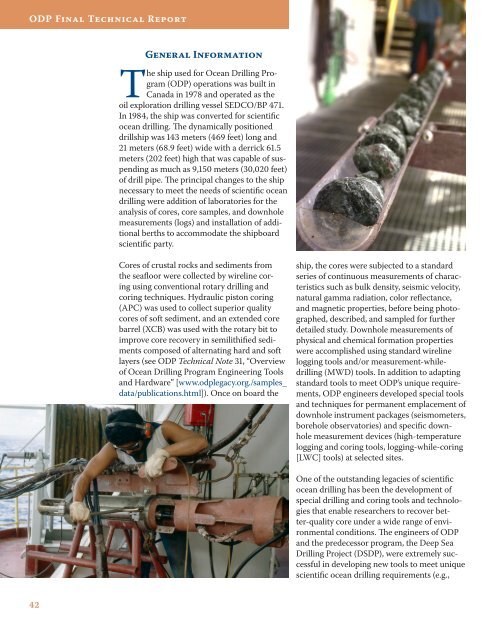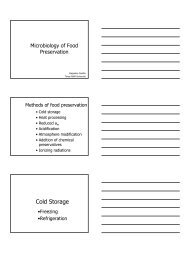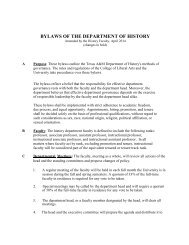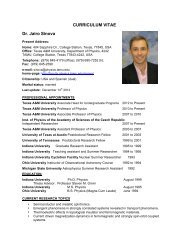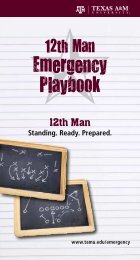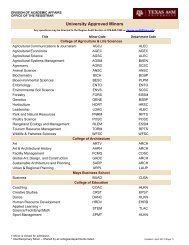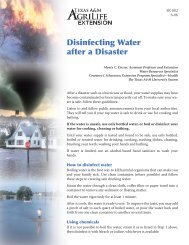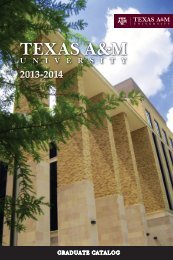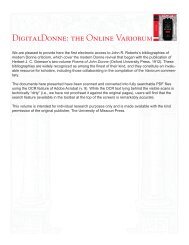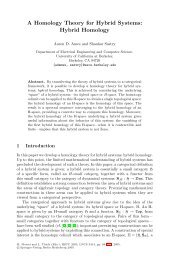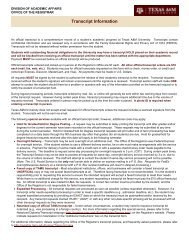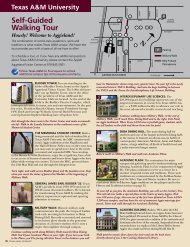ODP Final Technical Report - Ocean Drilling Program - Texas A&M ...
ODP Final Technical Report - Ocean Drilling Program - Texas A&M ...
ODP Final Technical Report - Ocean Drilling Program - Texas A&M ...
You also want an ePaper? Increase the reach of your titles
YUMPU automatically turns print PDFs into web optimized ePapers that Google loves.
<strong>ODP</strong> <strong>Final</strong> <strong>Technical</strong> <strong>Report</strong>General InformationThe ship used for <strong>Ocean</strong> <strong>Drilling</strong> <strong>Program</strong>(<strong>ODP</strong>) operations was built inCanada in 1978 and operated as theoil exploration drilling vessel SEDCO/BP 471.In 1984, the ship was converted for scientificocean drilling. The dynamically positioneddrillship was 143 meters (469 feet) long and21 meters (68.9 feet) wide with a derrick 61.5meters (202 feet) high that was capable of suspendingas much as 9,150 meters (30,020 feet)of drill pipe. The principal changes to the shipnecessary to meet the needs of scientific oceandrilling were addition of laboratories for theanalysis of cores, core samples, and downholemeasurements (logs) and installation of additionalberths to accommodate the shipboardscientific party.Cores of crustal rocks and sediments fromthe seafloor were collected by wireline coringusing conventional rotary drilling andcoring techniques. Hydraulic piston coring(APC) was used to collect superior qualitycores of soft sediment, and an extended corebarrel (XCB) was used with the rotary bit toimprove core recovery in semilithified sedimentscomposed of alternating hard and softlayers (see <strong>ODP</strong> <strong>Technical</strong> Note 31, “Overviewof <strong>Ocean</strong> <strong>Drilling</strong> <strong>Program</strong> Engineering Toolsand Hardware” [www.odplegacy.org./samples_data/publications.html]). Once on board theship, the cores were subjected to a standardseries of continuous measurements of characteristicssuch as bulk density, seismic velocity,natural gamma radiation, color reflectance,and magnetic properties, before being photographed,described, and sampled for furtherdetailed study. Downhole measurements ofphysical and chemical formation propertieswere accomplished using standard wirelinelogging tools and/or measurement-whiledrilling(MWD) tools. In addition to adaptingstandard tools to meet <strong>ODP</strong>’s unique requirements,<strong>ODP</strong> engineers developed special toolsand techniques for permanent emplacement ofdownhole instrument packages (seismometers,borehole observatories) and specific downholemeasurement devices (high-temperaturelogging and coring tools, logging-while-coring[LWC] tools) at selected sites.One of the outstanding legacies of scientificocean drilling has been the development ofspecial drilling and coring tools and technologiesthat enable researchers to recover better-qualitycore under a wide range of environmentalconditions. The engineers of <strong>ODP</strong>and the predecessor program, the Deep Sea<strong>Drilling</strong> Project (DSDP), were extremely successfulin developing new tools to meet uniquescientific ocean drilling requirements (e.g.,42


